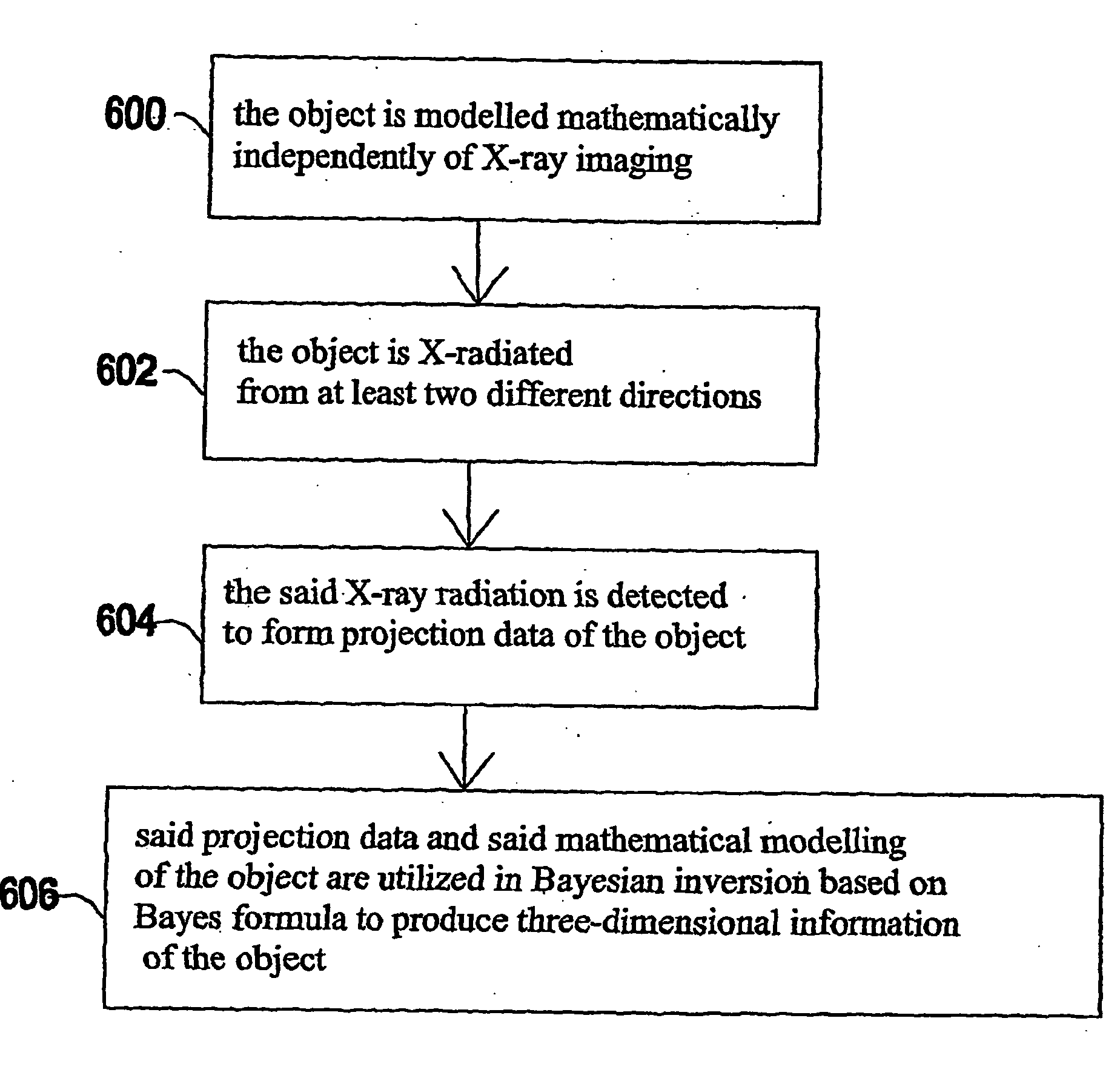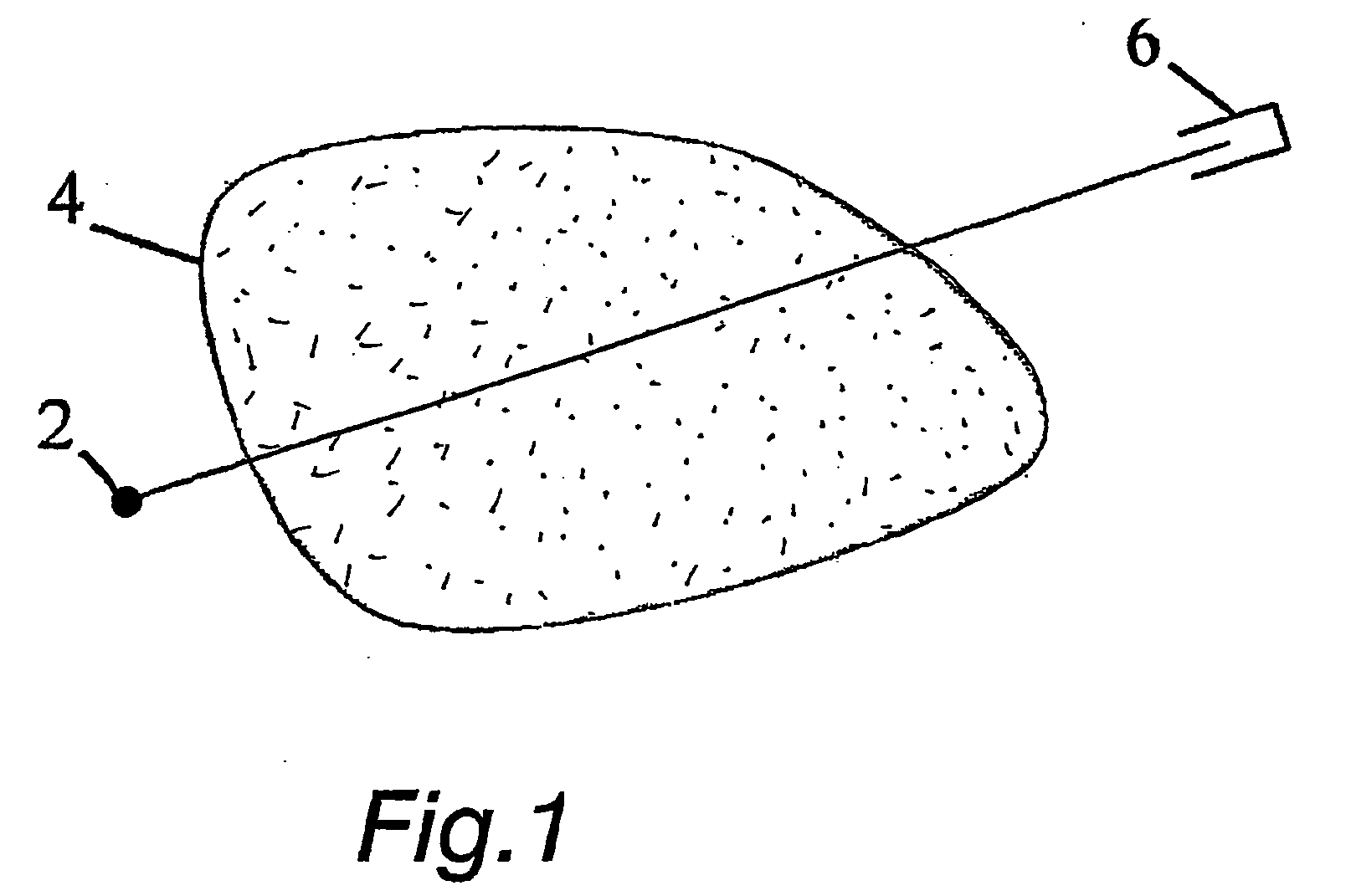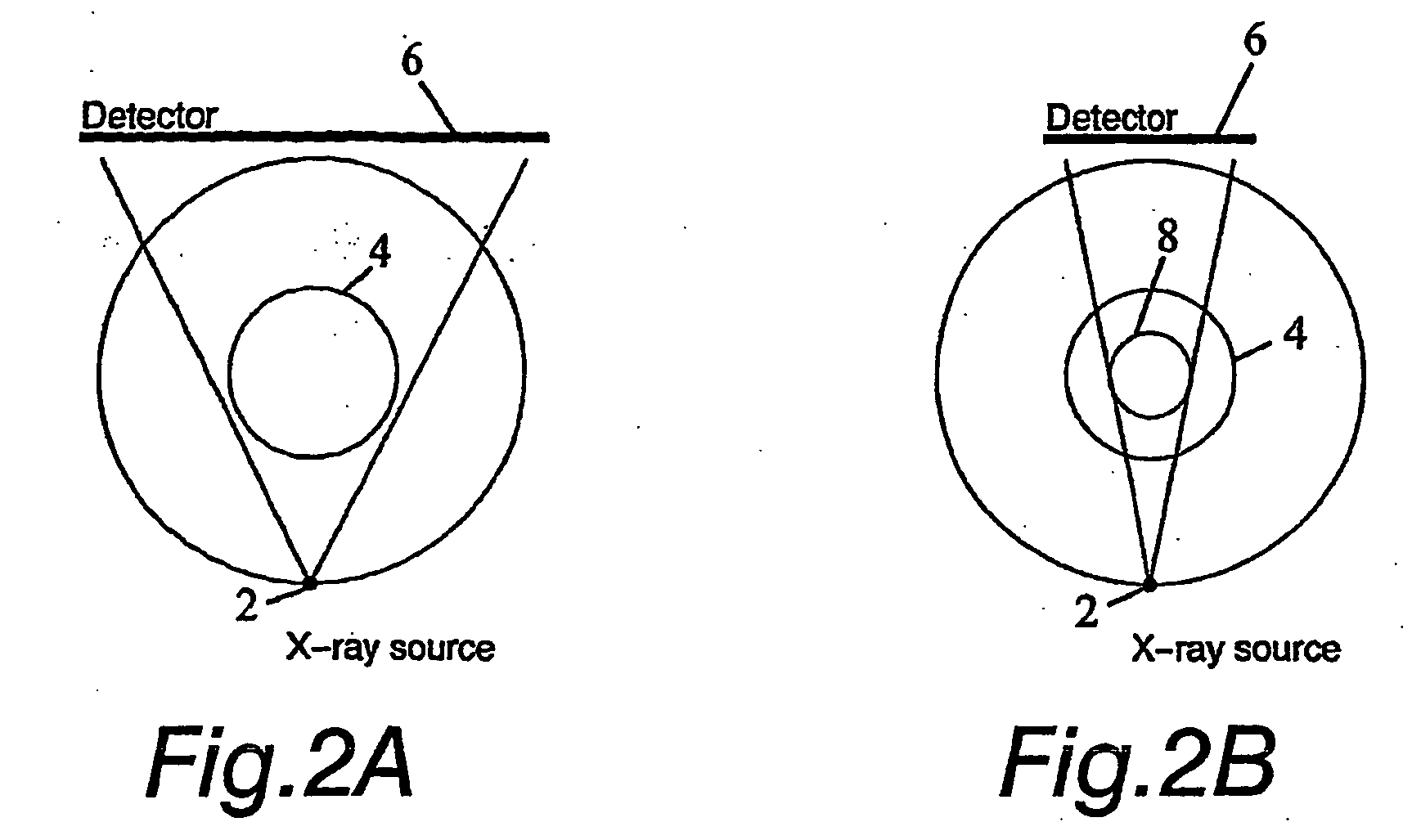Method and arrangement for medical x-ray imaging and reconstruction from sparse data
a technology of sparse projection data and reconstruction method, applied in image data processing, diagnostics, image data processing details, etc., can solve the problems of insufficient information in the sparse projection data to fully describe the 3-d body, traditional reconstruction algorithms such as filtered backprojection (fbp), fourier reconstruction (fr) or algebraic reconstruction technique (art) do not give satisfactory reconstructions from sparse projection data, and it is difficult to use a priori information
- Summary
- Abstract
- Description
- Claims
- Application Information
AI Technical Summary
Benefits of technology
Problems solved by technology
Method used
Image
Examples
Embodiment Construction
[0024] In practical imaging situations X-ray images are not always available from all around the body. The body might be visible only from certain directions due to imaging geometry. For example this is the case in 3-D mammography with the breast compressed against the detector, or in intraoral dental imaging with the detector inside the patient's mouth. This situation is called limited-angle tomography. Also, the region of interest might be surrounded by tissue that need not be imaged, like in extraoral dental imaging. This situation is called local tomography. In addition the number of radiographs should be minimized in medical applications for reducing the X-ray dose of the patient.
[0025] In the preferred embodiments of the invention Bayesian inversion algorithms are used to create a new type of 3-D medical X-ray imaging. It is intermediate between a projection radiograph and a full computed tomography scan. Two steps are needed to perform successfully such imaging: In step one,...
PUM
 Login to View More
Login to View More Abstract
Description
Claims
Application Information
 Login to View More
Login to View More - R&D
- Intellectual Property
- Life Sciences
- Materials
- Tech Scout
- Unparalleled Data Quality
- Higher Quality Content
- 60% Fewer Hallucinations
Browse by: Latest US Patents, China's latest patents, Technical Efficacy Thesaurus, Application Domain, Technology Topic, Popular Technical Reports.
© 2025 PatSnap. All rights reserved.Legal|Privacy policy|Modern Slavery Act Transparency Statement|Sitemap|About US| Contact US: help@patsnap.com



